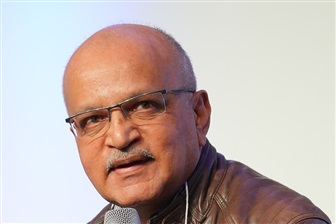As labor shortages arise, more automation and intelligence have been introduced in various industries. Canada-based Cyberworks Robotics develops self-driving technology for mobile machines and vehicles. Its solution has been adopted by airports, greenhouses and other organizations.
Founded eight years ago, Cyberworks focuses on level 5 autonomous navigation technology for industrial equipment. According to CEO Vivek Burhanpurkar, the company's Retrofit Autonomous Vehicle System (RAVS) has helped it gain a presence in Canada and the US. Cyberworks is now looking to expand to the Asian market.
Learning from human behaviors
Burhanpurkar said the solution has widely varying applications in different kinds of environments where the vehicles have to traverse gigantic areas with people or other obstacles.
Cyberworks recently finished a pilot program in a major international airport in the US. Burhanpurkar said the company enabled floor cleaning machines with autonomous navigation technology that the airport staff learned to use within 15 minutes.
He said the technology learns from a manual operator's behavior. In the airport case, the technology learns to do the work as the janitor uses the machine to clean the floor as usual.
"So, the next day, when he comes to work, he just has to press a button and it's going to clean the entire airport just the way he did the previous day," Burhanpurkar said.
He added that the self-driving machine can also use its artificial intelligence to adapt to the environment, avoiding people moving around.
Another use case is the material handling tug at a Canadian greenhouse. Burhanpurkar said workers used to move plants from one location to another at the greenhouse with trolleys. The work is strenuous because trolleys loaded with heavy plants are hard to push.
To reduce the labor, the greenhouse first deployed 18 of Cyberworks' autonomous tow tugs. Burhanpurkar said the adoption has been so successful that the customer ordered 50 more tow tugs to the same facility.
Navigation system that scales up self-driving technology adoption
While adding self-driving technology to industrial equipment is a familiar idea, mass adoption has yet to arrive.
Burhanpurkar said self-driving technology developers use the software approach called simultaneous localization and mapping (SLAM). Almost every company utilizes the same versions of a SLAM algorithm for autonomous navigation.
The SLAM algorithms rely on mapping key features in a space to make self-driving machines navigate properly, according to Burhanpurkar. He said if any of the features are changed or blocked from the field of view, the algorithms will malfunction, which is called the loop closure problem.
To tackle the issue, Burhanpurkar said Cyberworks developed Sky Lane, the world's first navigation system that augments the SLAM technology. The company uses features in the ceiling to synthesize lines that can be used as laneways to help a machine navigate. He said the machine will keep operating until the next key feature is detected on the ground. Sky Lane is essential for Cyberworks to realize the mass adoption of self-driving technology in the industrial field.
Burhanpurkar said the company also spent many years developing a modular technology base that can be easily adapted to any equipment. It generally takes Cyberworks a few weeks to apply its technology to a new product, while the competitors might take years, he added.
The adaptability helps Cyberworks trim the development time and cost, according to Burhanpurkar. Equipment manufacturers also can reduce investment in adding the self-driving technology to their products.
Burhanpurkar said Cyberworks designed its solution to be an easy add-on to existing products. The technology can also be transferred to a new piece of equipment when the old one reaches the end of its useful life.
Expansion in APAC market
As industrial equipment with autonomous navigation capability helps eliminate labor costs, Burhanpurkar said Cyberworks' technology is desirable in markets where labor costs are high. Besides its home turf, the company has entered the US market. It now plans to expand in the Asia Pacific region, especially in Japan, Taiwan, Singapore and Australia.
Burhanpurkar said the company is seeking partners in the Asia Pacific region to integrate its technology with the products of other manufacturers, selling and supporting those products throughout the region.
He added that Cyberworks is also deeply engaged in licensing its technology. It already has active discussions with large South Korean companies and hopes to find similar partners in Taiwan.

Vivek Burhanpurkar is the CEO of Cyberworks Robotics. Credit: Cyberworks




